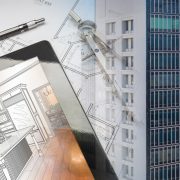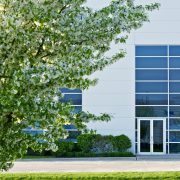Why Hybrid Work is Playing a Bigger Role in CRE Than Inflation
Inflation, inflation, inflation… We’ve all heard about it non-stop this year.
In 1964, according to the Federal Reserve History, “inflation measured a little more than 1 percent per year… Inflation began ratcheting upward in the mid-1960s and reached more than 14 percent in 1980.”
Today, the U.S. inflation rate sits at about eight percent; bouncing between the three to 10 range over the past few years. However, there may be something even bigger looming in the shadows of commercial real estate today.
Hybrid work.
In August 2022, Yahoo Finance released an article revealing that hybrid work is an even bigger concern for commercial real estate compared to inflation or a recession. Why?
Many companies, as a result of the COVID-19 pandemic, have opted for hybrid work—a mix of in-person and remote work—for employees. What does this mean for commercial real estate? According to Yahoo Finance, the overall footprint is shrinking.
Interested in learning more? Read on for the full Yahoo Finance article or check out our article “What Does the Future Hold for Commercial Office Space?”
“Hybrid work ‘bigger concern’ than inflation or recession for commercial real estate”
Commercial real estate has been experiencing a downturn in many markets and hybrid work is a big reason why, according to one real estate executive.
According to data from MSCI, commercial real estate transactions fell 22% in the second quarter from a year ago. And while inflation and an economic recession are both weighing heavily on the minds of real estate investors and “creating some hesitation,” Marcus and Millichap CEO Hessam Nadji said that it’s “not really a long-term concern.”
“The bigger concern is this hybrid work environment,” he said on Yahoo Finance Live (video above). “We’re seeing a lot of focus on amenities like fitness, child care, and even entertainment to motivate workers to want to come back into the office at least three days a week, four days a week. There’s a lot of focus on how to create a reason for people to want to congregate and come back into the office space.”
Amid the pandemic, many companies were forced to shift their workplace settings away from strictly in-office to remote working environments. As cases of the virus began reducing and vaccines became readily available, many companies opted for a hybrid work model — meaning a mix of both in-person and remote work — for their employees.
Hybrid work environments require less capital from companies as workers going into the office just a few days per week require less physical space at work for individual tasks, working with fellow employees, communicating with clients, etc.
A McKinsey survey of more than 25,000 respondents found that 58% of Americans have the opportunity to work remotely at least once a week, while 35% report having the option five days a week. And when given the chance to work flexibly, 87% take the opportunity.
“Certainly in the office space consumption and new leases that are being signed, we see the hybrid workplace play a big factor in the reduction of footprint and the space needs [new] expectations going forward,” Nadji said.
‘The overall footprint looks to be shrinking’
Companies like Yelp (YELP), PayPal (PYPL), Airbnb (ABNB), and Lyft (LYFT) have dramatically reduced their physical footprints in major cities or even shifted to permanent work-from-home setups.
An Accenture study from 2021 found that 63% of high-growth companies adopted a “productivity anywhere” workforce model, meaning that hybrid, in-person, or entirely remote work policies are all on the table. And several studies have found that the remote or hybrid work model has not had a negative effect on productivity.
“The overall footprint currently looks to be shrinking,” Nadji said. “I think if you look two to four years out, when we have the next economic cycle, with job growth coming and a lack of overbuilding — there’s very little overbuilding going on in commercial real estate — I think they’re going to offset each other as two factors: one being the reduction of footprint because of hybrid workspace, and then the other being new demand coming into the market.”
At the same time, though, Nadji highlighted how some of the fastest-growing companies in the U.S. are either acquiring buildings or the land to build future buildings. Tech companies, in particular, are looking for additional space due to the growing popularity of large data centers.
“The composition of space utilization is changing for sure to accommodate for more team and collaboration and less about the individual employee space,” Nadji said.
Additionally, he said, within the commercial real estate industry, clients interested in development have stepped up, “looking for opportunities to take … older office buildings and actually older properties in every segment, and improve them, upgrade them, bring them up to the current kind of a configuration that the market seems to need as a really good investment instead of building brand-new projects.”









